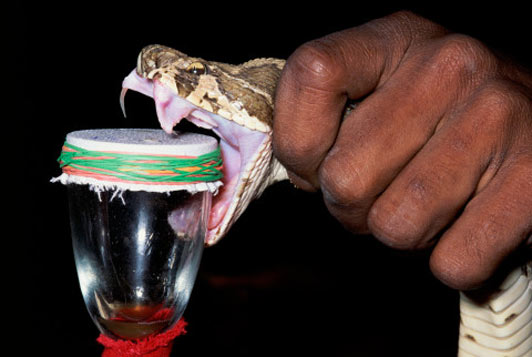Daboia Snake (Daboia russelii) – Russell’s viper
Daboia is a monotypic genus of venomous Old World viper. The single species, D. russelii, is found in Asia throughout the Indian subcontinent, much of Southeast Asia, southern China and Taiwan. The species was named in honor of Patrick Russell (1726–1805), a Scottish herpetologist who first described many of India’s snakes; and the genus is after the Hindi name meaning “that lies hid”, or “the lurker.” Apart from being a member of the big four snakes in India, Daboia is also one of the species responsible for causing the most snakebite incidents and deaths among all venomous snakes on account of many factors, such as their wide distribution and frequent occurrence in highly-populated areas. Two subspecies are currently recognized, including the nominate subspecies described here.
Daboia are commonly known as Russell’s viper and chain viper, among other names.
Fast Facts about Russell’s viper Snake
This snake can grow to a maximum length of 166 cm (5.5 ft) and averages about 120 cm (4 ft) on mainland Asian populations, although island populations do not attain this size. It is more slenderly built than most other vipers. Ditmars (1937) reported the following dimensions for a “fair sized adult specimen”
The head is flattened, triangular and distinct from the neck. The snout is blunt, rounded and raised. The nostrils are large, in the middle of a large, single nasal scale. The lower edge of the nasal touches the nasorostral. The supranasal has a strong crescent shape and separates the nasal from the nasorostral anteriorly. The rostral is as broad as it is high.
The crown of the head is covered with irregular, strongly fragmented scales. The supraocular scales are narrow, single, and separated by 6–9 scales across the head. The eyes are large, flecked with yellow or gold, and each is surrounded by 10–15 circumorbital scales. There are 10–12 supralabials, the 4th and 5th of which are significantly larger. The eye is separated from the supralabials by 3–4 rows of suboculars. There are two pairs of chin shields, the front pair of which are notably enlarged. The two maxillary bones support at least two and at the most five or six pairs of fangs at a time: the first are active and the rest replacements. The fangs attain a length of 16 mm in the average specimen.
The body is stout, the cross-section of which is rounded to cylindrical. The dorsal scales are strongly keeled; only the lower row is smooth. Mid-body, the dorsal scales number 27–33. The ventral scales number 153–180. The anal plate is not divided. The tail is short — about 14% of the total body length — with the paired subcaudals numbering 41–68.
The color pattern consists of a deep yellow, tan or brown ground color, with three series of dark brown spots that run the length of its body. Each of these spots has a black ring around it, the outer border of which is intensified with a rim of white or yellow. The dorsal spots, which usually number 23–30, may grow together, while the side spots may break apart. The head has a pair of distinct dark patches, one on each temple, together with a pinkish, salmon or brownish V or X pattern that forms an apex towards the snout. Behind the eye, there is a dark streak, outlined in white, pink or buff. The venter is white, whitish, yellowish or pinkish, often with an irregular scattering of dark spots.
Courtesy : http://en.wikipedia.org/wiki/Daboia_russelii
Daboia Snake, Russell’s viper Images / Pictures
















